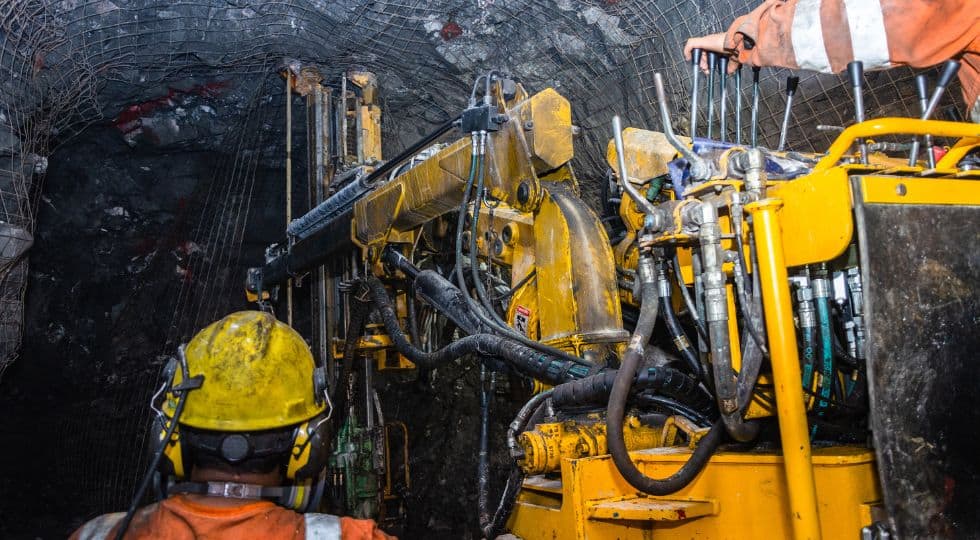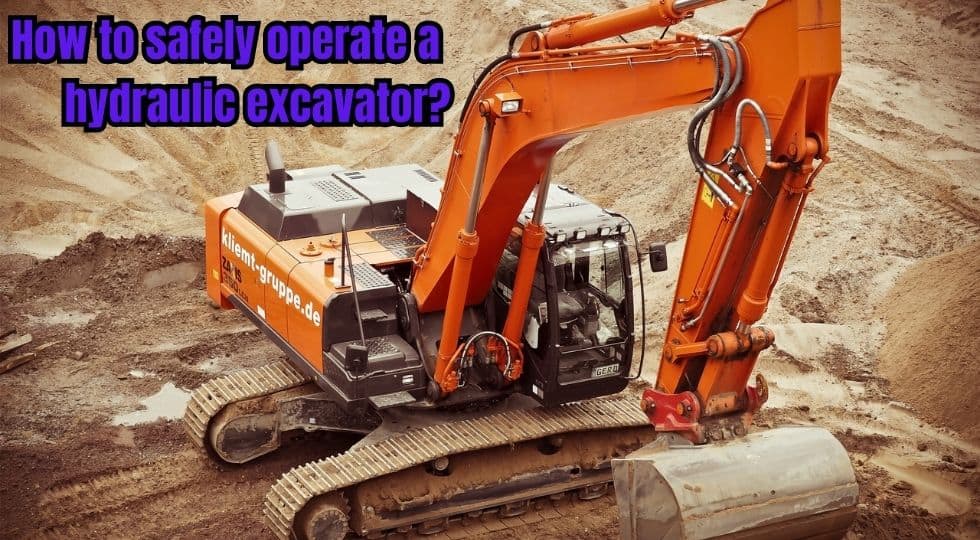Whether you are an experienced operator in the construction industry or new to operating heavy equipment, there is always room for learning and improvement. How to safely operate a hydraulic excavator? It has crucial aspects like controls, driving/operating, digging, backfilling, and parking.
A solid grasp of an excavator’s controls is fundamental for safe and efficient operation—the various controls, including joysticks, foot pedals, and hydraulic system controls. Understanding these controls will allow operators to precisely manipulate the machine’s movement and complete tasks.
Understanding the capabilities and constraints of the equipment is necessary for driving and running an excavator. We will guide how to maneuver the Excavators using foot pedals and driving techniques to move forward, backward, and turn. Additionally, we will cover best practices for proper maintenance and upkeep of the machine.
Digging is a primary function of excavators, and operators must be proficient in this task. The proper techniques for digging include how to position the machine, use the boom, stick, and bucket, and adjust the dig depth.
Backfilling is a critical aspect of excavating that operators must master. So how to move soil and other materials back into the hole while minimizing the risk of damage to the machine or the surrounding environment?
Tips to safely operate a hydraulic excavator
Before the Operation of a hydraulic Excavator Safety Tips:
Excavators are powerful machines commonly used in construction and other heavy-duty industries. However, if you do not use them correctly, they can also be harmful.
Read the Operator’s Manual: Read the instruction booklet for the Excavators you will use. It will contain important safety information, operating procedures, and maintenance requirements.

Conduct a Pre-Operation Inspection: Before operating the Excavators, inspect them thoroughly to ensure it is in good working condition. Check the engine, hydraulic system, controls, tires or tracks, and safety devices.

Wear Appropriate Personal Protective Equipment (PPE): PPE such as hard hats, safety glasses, high-visibility clothing, and steel-toed boots should be worn at all times when operating an excavator.

Check the Work Area: Before starting the Excavators, check the work area for hazards such as overhead power lines, underground utilities, or unstable ground conditions. Make sure there are no obstructions or persons in the workspace.

Secure the Excavator: Ensure the Hydraulic Excavator is parked on a level surface and the bucket is on the ground before starting. The Excavator should be adequately secured with the brakes engaged and the tracks or tires chocked.

Familiarize Yourself with the Controls: Know the location and function of each control on the Excavators before starting it—practice using the controls to become comfortable with their operation.

Be Aware of the Surroundings: Always be aware of your surroundings when operating a hydraulic excavator. Be mindful of other workers and equipment in the area.

During the Operation of a hydraulic Excavator Safety Tips:
Operating an excavator can be dangerous if not done correctly.
Wear Your Seatbelt: Always wear a safety belt when working an excavator. It will keep you in your seat in case of sudden movements or accidents.
Keep a Safe Distance: Keep a safe distance from other workers and equipment while operating an excavator. Avoid any pinch points, swing radiuses, and crush zones.
Use the Backup Alarm: Ensure that the Backup alarm is in working condition and use it when backing up the Excavator to alert others of your movements.
Use Hand Signals: Use standardized hand signals when communicating with ground personnel. Make sure to agree on and understand the signals before starting work.
Check Your Blind Spots: Check your blind spots before moving with the Excavator. Use your mirrors and move your head to ensure the location is precise.
Be Mindful of Overhead Power Lines: Always be mindful of overhead power lines when operating an excavator. Stay at least 10 feet away from them to avoid any electrical hazards. Keep Your Hands and Feet inside the Cab: Keep your hands and feet inside the cab while operating the Excavator. Do not reach outside of the cab or stick your head out.
Use the Correct Bucket Size: Use the right size bucket for your project. Using a too-large or too-small bucket can cause instability and increase the risk of accidents.
Avoid Overloading: Avoid overloading the bucket beyond the Excavator’s recommended capacity. Overloading can cause the machine to tip over or lose stability.
Shut Down Safely: After completing work, shut down the Excavator safely. Lower the bucket to the ground, engage the parking brake, and turn off the engine.
After Operation of a hydraulic Excavator Safety Tips:
After operating an excavator, following some safety tips is essential to ensure its adequately stored and maintained.
Secure the Excavator: Make sure the Excavator is properly secured and parked on a level surface. Place the load on the ground and apply the parking stop.
Conduct a Post-Operation Inspection:
1. Conduct a thorough inspection of the Excavator after use.
2. Check for any damages, leaks, or signs of wear and tear.
3. Report any issues to the maintenance team.
Refuel Safely: If the Excavator needs refueling, do so safely. Turn off the engine and ensure no open flames, smoking, or ignition sources are nearby.
Store the Excavator Properly: Store the Excavator in a safe and secure location, preferably in a covered area. Secure all attachments and lower the boom to prevent tipping or accidental movement.
Clean the Excavator: After using the Excavator, clean it to keep away filth and debris accumulation. It will also assist in locating any damage or signs of wear and pressure that may require care.
Remove the Key: Remove the key from the ignition and keep it in a safe place to prevent unauthorized use of the Excavator.
Report Any Issues: Report any issues or problems with the Excavator to the maintenance team. It will ensure that the necessary repairs or maintenance can be completed before the subsequent use.
Store Tools and Equipment Safely: Store all tools and equipment properly to prevent tripping hazards and ensure they are in good working condition for subsequent use.
Properly Dispose of Waste: Properly dispose of any waste or debris generated during the operation. It helps maintain a secure and orderly workplace.
Follow Maintenance Schedule: Follow the recommended maintenance schedule for the Excavator. It keeps it in good working condition and prevents any breakdowns or accidents.
Controls to safely operate a hydraulic excavator
Excavators have a variety of controls that enable the operator to perform various functions such as moving, digging, loading, and dumping.
Joysticks: Joysticks control the movement of the boom, stick, and bucket. The left joystick typically controls the boom and stick, while the right joystick controls the bucket.
Foot Pedals: Foot pedals control the movement of the tracks or wheels, allowing the operator to move the Excavator forwards, backward, and turns.
Control Panel: The control panel is where the operator can monitor and control various Excavator functions, such as the engine, hydraulic systems, and lighting.
Cab Controls: Cab controls adjust the seat position, air conditioning, and other settings inside the operator’s cab.
Emergency Shut-Off: A safety feature called the emergency shut-off switch instantly turns the Excavator off in an emergency.
Hydraulic System Controls: The hydraulic system controls allow the operator to control the flow and pressure of the hydraulic system, which powers the Excavator’s movements.
Blade Control: Excavators with a blade attachment have controls that allow the operator to raise, lower, and angle the blade for various applications.
Operators must thoroughly understand the controls and their functions to operate the Excavator safely and efficiently. Familiarizing oneself with the controls before operating the Excavator is highly recommended.
Driving tips to safely operate a hydraulic excavator
Driving an excavator involves operating the tracks or wheels and controlling the movement of the machine.
Familiarize yourself with the controls: Before driving the Excavator, familiarize yourself with the controls, including the foot pedals and joysticks, to operate the machine smoothly.
Use the mirrors: Use the mirrors on the Excavator to see behind you and to check your blind spots. Be aware of your surroundings at all times.
Keep a steady speed: Maintain a steady speed when driving the Excavator, especially when carrying loads. Sudden stops or starts can cause instability and cause the machine to tip over.
Watch the terrain: Pay attention to the terrain you are driving on, especially uneven ground or slopes. Keep the excavator level and avoid steep inclines or declines.
Avoid obstacles: Watch out for obstacles such as rocks, debris, or other equipment on the ground. Avoid driving over them to prevent damage to the Excavator or the object.
Use the parking brake: The parking stop should always be applied before exiting the Excavator. It stops the equipment from moving irregularly.
Follow safe operating procedures: Follow all safety procedures when driving the Excavator, including wearing your seatbelt, avoiding distractions, and using hand signals when communicating with ground personnel.
Conclusion
Hydraulic Excavators are vital tools that can be hazardous if not used carefully. Operators must follow safety procedures, such as wearing seat belts, keeping a safe distance from other workers and equipment, using hand signals, checking blind spots, being mindful of overhead power lines, using the correct bucket size, avoiding overloading, and shutting down safely. By following these safety tips and best practices, excavator operators can help prevent accidents and ensure a safe work environment. If you need further information, you can contact us.

